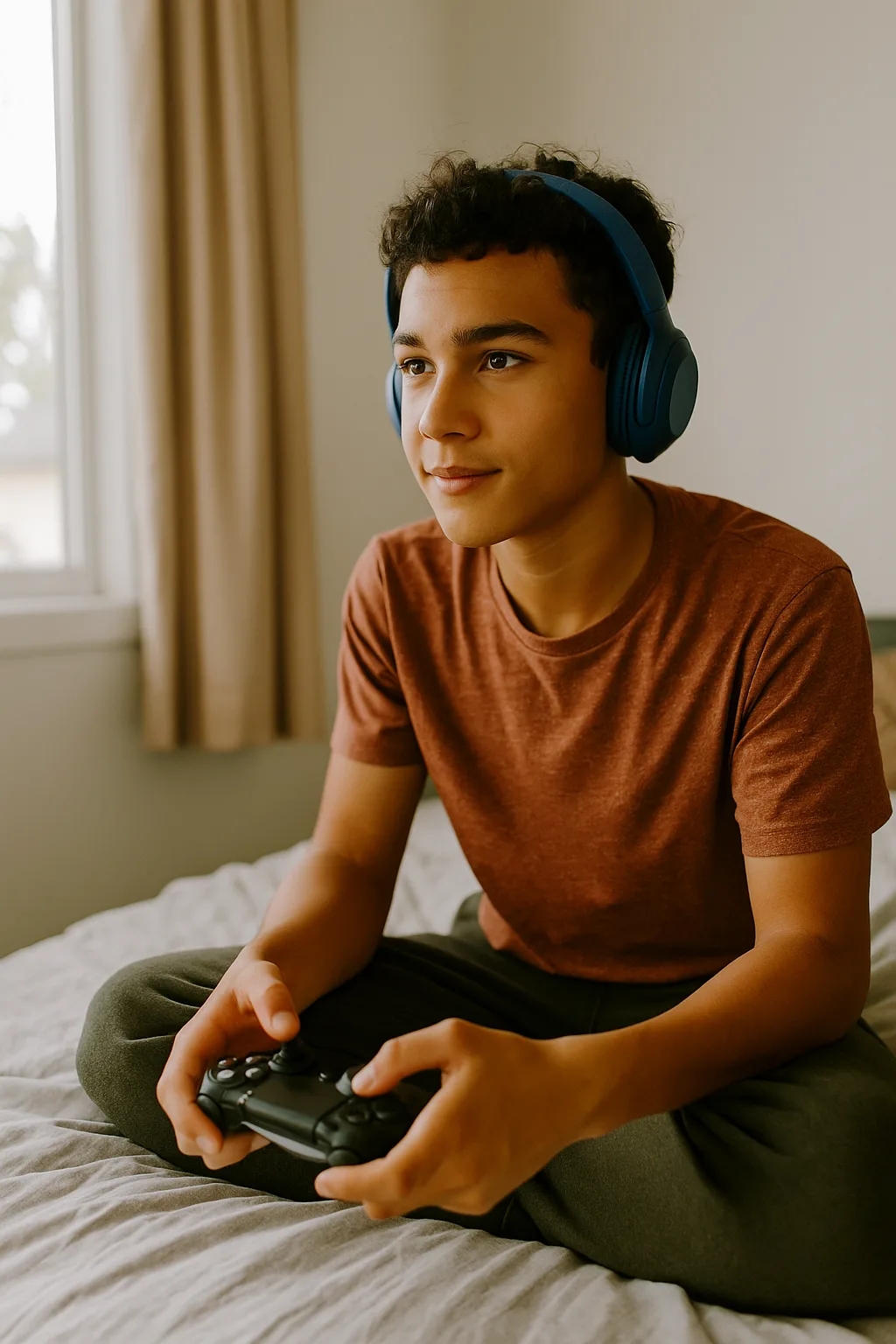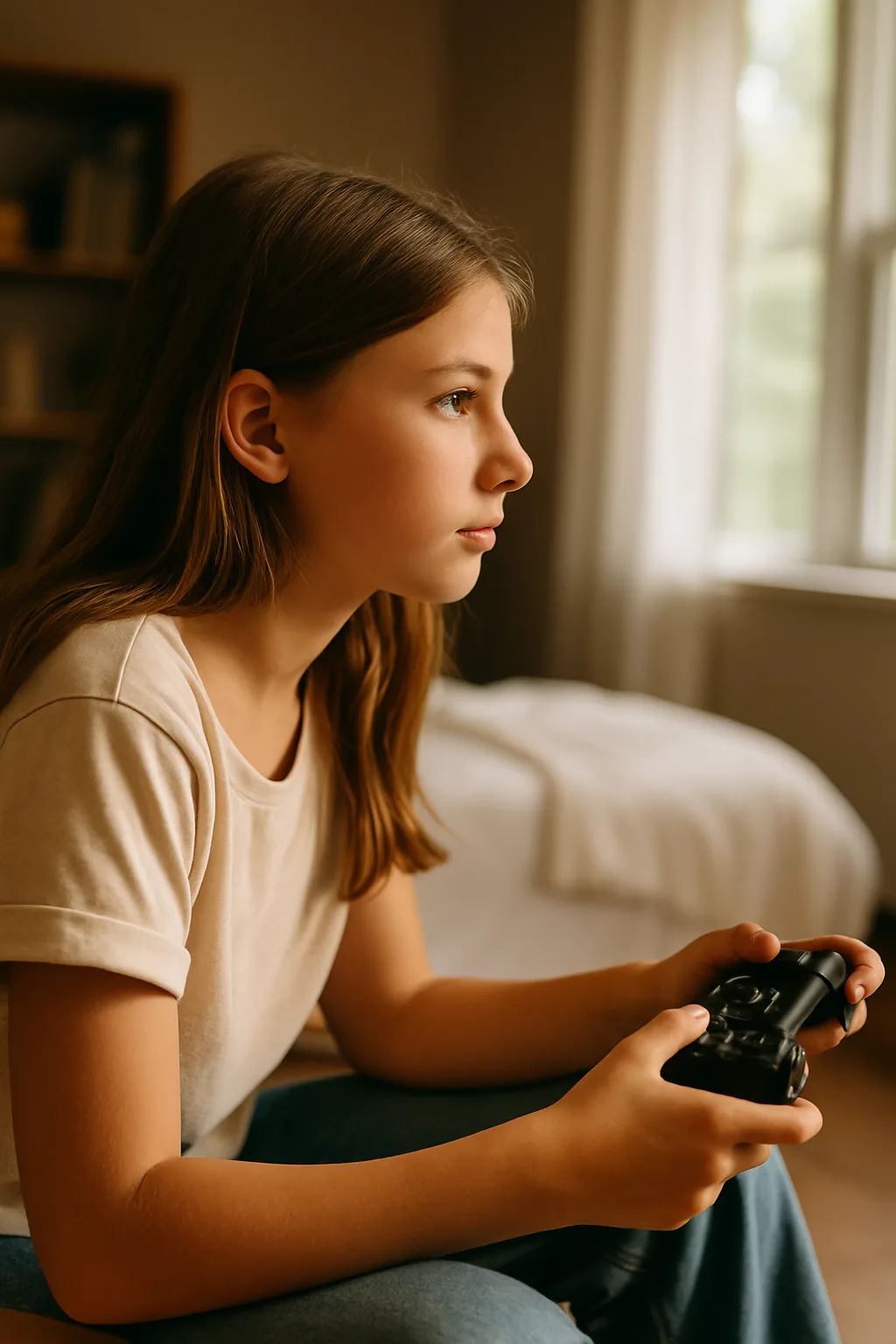In today’s digital age, gaming is a popular pastime among teenagers. While it can offer many cognitive and social benefits, it’s important to be aware of the potential drawbacks. Understanding both the positives and negatives of gaming can help teens—and the adults who support them—strike a healthy balance.
Benefits of Gaming
Gaming isn’t all bad—in fact, it can foster growth in a variety of ways:
Cognitive Skills Development
Many games challenge players to solve problems, think critically, and plan strategically. These skills can translate to better performance in academics and real-life decision-making.
Social Interaction
Online multiplayer games offer opportunities for teens to connect with peers, form friendships, and build communication skills, often providing a sense of community and belonging.
Stress Relief
Gaming can serve as a positive outlet for stress, offering an enjoyable escape from academic and social pressures.
Creativity and Imagination
From story-driven adventures to sandbox-style worlds, games can inspire creativity through character design, storytelling, and imaginative exploration.
Hand-Eye Coordination
Fast-paced games requiring precise timing and movement can sharpen reflexes and improve fine motor skills.
Goal Setting and Achievement
Progressing through game levels and completing challenges can build self-confidence and reinforce perseverance.
Disadvantages of Gaming
However, too much of a good thing can become problematic:
Addiction Potential
Excessive gaming may lead to compulsive behavior, interfering with responsibilities and daily routines.
Physical Health Issues
Long hours of screen time can contribute to a sedentary lifestyle, leading to poor posture, eye strain, and other health concerns.
Social Isolation
Gaming can sometimes replace in-person connections, limiting social development and real-world interaction.
Academic Impact
Spending too much time gaming may take away from homework, studying, and academic focus.
Exposure to Inappropriate Content
Some games may include violence, suggestive themes, or negative behavior that can influence teens.
Sleep Disruption
Late-night gaming can interfere with sleep schedules, leading to fatigue, irritability, and trouble concentrating during the day.


How Much Is Too Much?
While each teen is different, a general guideline suggests that more than:
- 2–3 hours per day on weekends
- 1–2 hours per day on weekdays
…could be considered excessive—especially if it starts to interfere with other areas of life.
Warning Signs of Excessive Gaming:
- Neglecting schoolwork or responsibilities
- Reduced physical activity or poor sleep habits
- Withdrawing from in-person social connections
- Increased irritability, anxiety, or emotional distress when not gaming
Encouraging Balance
Helping teens develop a balanced relationship with gaming is key. Encourage:
- Regular physical activity
- Face-to-face time with friends and family
- Hobbies outside of screens
- Clear limits on daily gaming time
With support and structure, gaming can remain a fun and enriching part of a teen’s life—without taking over.
Keeping Youth Safe Online: Why It Matters and How to Do It
In today’s digital world, the internet is an essential part of daily life for young people. From school assignments and socializing to entertainment and creative expression, the online world offers countless opportunities. But it also comes with risks that can impact a child’s emotional, psychological, and even physical well-being.
Why Online Safety for Youth Matters
While the internet can be a powerful tool for learning and connection, it also exposes youth to:
- Cyberbullying: Negative comments, exclusion, and harassment can deeply affect self-esteem and mental health.
- Inappropriate Content: Youth may unintentionally (or intentionally) access graphic, violent, or sexual material that they’re not developmentally ready to process.
- Online Predators: Some individuals use anonymity to manipulate or groom young users.
- Privacy Risks: Sharing personal information can lead to identity theft or unsafe contact.
- Addiction & Mental Health: Constant access to social media and gaming can fuel anxiety, depression, or unhealthy coping strategies.
Creating a safe digital environment doesn’t mean restricting all internet use—it means guiding, educating, and protecting.
How to Keep Youth Safe Online
Here are some key strategies:
1. Open the Conversation
Create a space where your child or teen feels safe talking about their online experiences. Ask open-ended questions like:
- “What’s your favorite app right now?”
“Have you ever seen anything online that made you uncomfortable?”
Normalize these conversations so your child knows they can come to you without fear of punishment or judgment.
Set Boundaries Together
Collaborate on rules around:
- Screen time limits
- What types of websites or apps are okay
- Times and places for device use (e.g., no phones in bedrooms at night)
This gives them ownership and makes them more likely to respect the boundaries.
Use Parental Controls Wisely
Parental controls can help filter inappropriate content, track screen time, and manage app use. Just be sure these tools support—not replace—healthy communication and trust.
Teach Digital Literacy and Critical Thinking
Help youth learn how to:
- Spot misinformation
- Question online interactions
- Understand what’s safe to share (and what isn’t)
Recognize manipulative tactics or unsafe behavior online
Model Healthy Digital Habits
Kids watch what adults do. Show balance in your own screen use, avoid oversharing, and talk about how you choose what to consume online.
Know the Apps They Use
Take time to explore the platforms your child is using. Learn how they work, what privacy settings are available, and what risks may be present. Apps like TikTok, Snapchat, Discord, and Instagram all have specific settings and risks worth understanding.
Watch for Red Flags
Stay alert for signs your child may be experiencing online harm:
- Changes in mood or behavior after screen time
- Secretiveness about online activity
- Avoidance of certain people or topics
- Sudden drops in self-esteem
If something feels off, trust your instincts and initiate a calm, supportive conversation.
Final Thoughts
Keeping youth safe online is not about controlling every click—it’s about building trust, teaching responsibility, and staying engaged. As adults, we may never fully understand the online world our children are growing up in, but by showing curiosity, care, and consistency, we can guide them toward safe, confident, and healthy digital lives.






